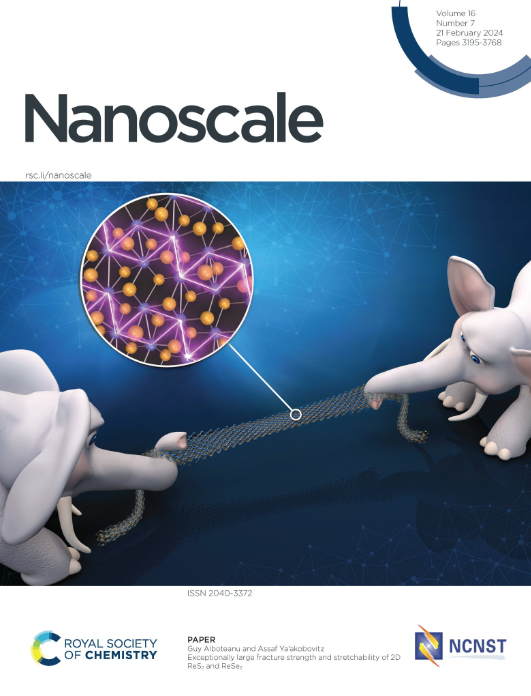共价键合氧化石墨烯-碳纳米管杂化纳米填料,用于实现具有优异机械性能和导热性的高性能聚酰胺6复合材料
IF 5.1
3区 材料科学
Q1 CHEMISTRY, MULTIDISCIPLINARY
引用次数: 0
摘要
氢能的兴起对用于储氢罐的聚酰胺6 (PA6)衬垫的机械强度和导热性提出了严格的要求。然而,PA6复合材料中弱界面的存在严重阻碍了增强相固有力学和导热性能的有效传递。在这项工作中,羟基功能化的碳纳米管(CNT-OH)被共价接枝到氧化石墨烯(GO)上,构建了一种杂化纳米填料,随后与六亚甲基二异氰酸酯(HDI)进行表面功能化,得到了一种富含异氰酸酯基团的反应性纳米填料(fGO+CNT-OH+HDI)。该功能化纳米填料在ε-己内酰胺的原位阴离子开环聚合过程中起到活化剂的作用,制备了具有增强纳米填料/纳米填料和纳米填料/基体界面相互作用的PA6复合材料。由于杂化纳米填料的协同增强和原位聚合驱动下的均匀分散,得到的复合材料仅含0.2 wt%的fGO+CNT-OH+HDI,具有出色的力学性能,抗拉强度提高36.3%,断裂伸长率达到130.86%。导热系数提高了46.3%。这种界面工程策略为开发可靠和安全的氢能应用的高性能衬垫材料提供了一条有希望的途径。本文章由计算机程序翻译,如有差异,请以英文原文为准。
Covalently bonded graphene oxide-carbon nanotube hybrid nanofillers for achieving high-performance polyamide 6 composites with superior mechanical properties and thermal conductivity
The rise of hydrogen energy places stringent demands on the mechanical strength and thermal conductivity of polyamide 6 (PA6) liners used in hydrogen storage tanks. However, the presence of weak interfaces in PA6 composites significantly hinders the efficient transfer of the intrinsic mechanical and thermal conductivity properties of the reinforcing phases. In this work, hydroxyl-functionalized carbon nanotubes (CNT-OH) were covalently grafted onto graphene oxide (GO) to construct a hybrid nanofiller, which was subsequently surface-functionalized with hexamethylene diisocyanate (HDI), yielding a reactive nanofiller (fGO+CNT-OH+HDI) rich in isocyanate groups. This functionalized nanofiller served as an activator during the in situ anionic ring-opening polymerization of ε-caprolactam, enabling the fabrication of PA6 composites with strengthened nanofiller/nanofiller and nanofiller/matrix interfacial interactions. Owing to the synergistic reinforcement from the hybrid nanofiller and its uniform dispersion driven by in situ polymerization, the resulting composite containing only 0.2 wt% fGO+CNT-OH+HDI exhibited outstanding mechanical performance, with a 36.3% increase in tensile strength and an exceptional elongation at break of 130.86%. In addition, the thermal conductivity was improved by 46.3%. This interfacial engineering strategy provides a promising pathway toward the development of high-performance liner materials for reliable and safe hydrogen energy applications.
求助全文
通过发布文献求助,成功后即可免费获取论文全文。
去求助
来源期刊

Nanoscale
CHEMISTRY, MULTIDISCIPLINARY-NANOSCIENCE & NANOTECHNOLOGY
CiteScore
12.10
自引率
3.00%
发文量
1628
审稿时长
1.6 months
期刊介绍:
Nanoscale is a high-impact international journal, publishing high-quality research across nanoscience and nanotechnology. Nanoscale publishes a full mix of research articles on experimental and theoretical work, including reviews, communications, and full papers.Highly interdisciplinary, this journal appeals to scientists, researchers and professionals interested in nanoscience and nanotechnology, quantum materials and quantum technology, including the areas of physics, chemistry, biology, medicine, materials, energy/environment, information technology, detection science, healthcare and drug discovery, and electronics.
 求助内容:
求助内容: 应助结果提醒方式:
应助结果提醒方式:


